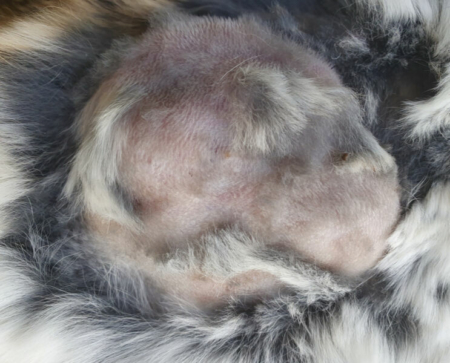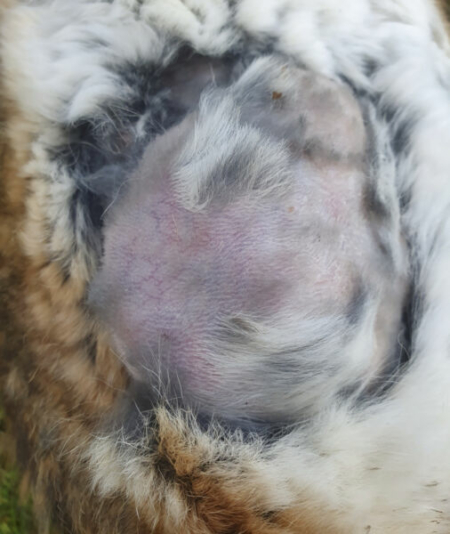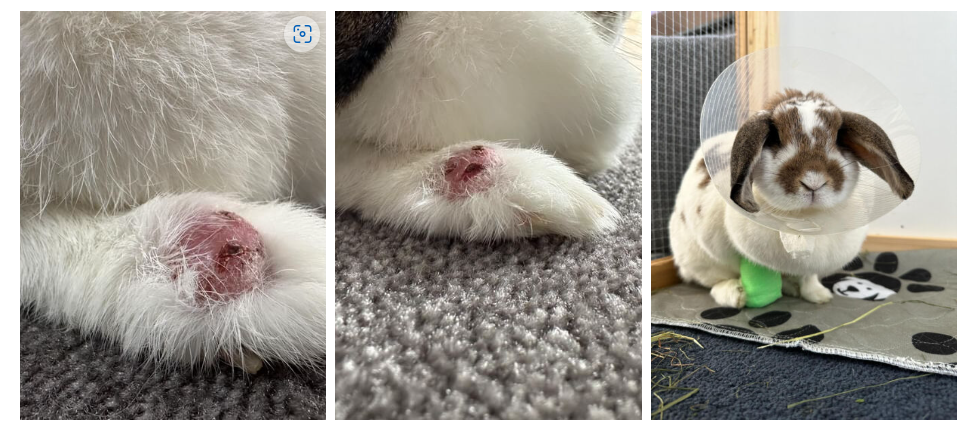Tumor diseases are not uncommon in rabbits. However, not every lump or growth is automatically a malignant tumor. Other conditions that present similarly include lipomas (fatty tumors), abscesses (pus-filled swellings), and benign growths.
Although these non-cancerous growths are not malignant, they can still cause significant issues. They often grow rapidly, potentially pressing on organs or interfering with essential bodily functions.
Contents
Diagnosis
Depending on the location of the tumor, it may not be visible at all, but the rabbit’s overall well-being may be affected. However, skin tumors are usually easy to detect.
Cancer is often palpable on the skin or in externally visible areas, such as skin tumors, mammary tumors, and testicular tumors. In contrast, internal tumors—such as brain tumors, bone tumors, lung tumors, kidney tumors, liver tumors, or uterine tumors—are not visible from the outside.
To determine whether a lump is a tumor and what type it is, a sample must be taken and examined.

Bone Tumor
In rabbits, bone tumors are most commonly osteosarcomas, which primarily affect older animals. These tumors frequently develop in the skull region.
To distinguish a bone tumor from a jaw abscess, the veterinarian will take an X-ray. A characteristic sign of a tumor is the presence of dense, cloudy structures on the image.
Unfortunately, there is no cure for osteosarcoma. In advanced cases, pain medication can help stabilize the rabbit for a certain period. However, if the rabbit continues to suffer despite treatment, euthanasia is recommended to prevent further pain.

Kidney Tumor
Kidney tumors are rare in rabbits and are usually the result of leukosis, a virus-induced disease. In most cases, both kidneys are affected, leading to symptoms such as loss of appetite, weight loss, and increased thirst.
By palpation, the veterinarian can often detect enlarged kidneys. A diagnosis is confirmed through a combination of laboratory tests and X-rays.
Since the kidneys perform essential functions and are severely impaired in such cases, treatment is usually unsuccessful. Euthanasia is recommended to prevent the rabbit from suffering.
Uterine Tumor (Adenocarcinoma)
Uterine tumors are the most common tumors in rabbits, especially in older females. They develop due to excessive hormone production in the uterine lining. These tumors are often malignant and can spread to the lungs.
Affected rabbits may show digestive issues, loss of appetite, and apathy. The veterinarian can often palpate the tumor and confirm the diagnosis using ultrasound or X-rays.
If detected early, spaying (removal of the uterus and ovaries) can be a successful treatment. However, in advanced stages—especially if the cancer has spread to the lungs—the prognosis is poor.
Mammary Tumor
Mammary tumors are common in older female rabbits, as their reproductive system undergoes significant hormonal strain over the years. These tumors typically appear as lumps in the mammary area, which are usually painless in the early stages. However, if the cancer spreads to the lungs, it can cause breathing difficulties.
Surgical removal of the tumors should be performed as soon as possible. At the same time, spaying (removal of the uterus and ovaries) can help prevent further hormone-related tumors. Before surgery, it is essential to confirm that no metastases are present.

Skin Tumor
In addition to mammary tumors, there are other superficial tumors on the skin. A sample is usually taken from these tumors (which can be done with local anesthesia without the need for general anesthesia) to determine whether they are malignant or benign. Often, these growths are actually abscesses.
Malignant tumors should be removed as quickly as possible through surgery. Benign tumors, however, should be removed if they grow larger and begin to interfere with the rabbit’s comfort or well-being.
Brain Tumor
Although brain tumors are rare in rabbits, they typically lead to rapid progression of symptoms. Often, they are only discovered accidentally after the animal’s death.
Clinically, affected rabbits may show neurological signs such as seizures, coordination difficulties, and altered consciousness. In such cases, treatment is not possible, and euthanasia is usually the best option to prevent further suffering for the animal.
Tumor in the Chest
Lung tumors in rabbits are usually the result of metastasis (when another tumor spreads to the lungs) and, unfortunately, cannot be treated. As long as the rabbit is breathing comfortably, it may still have a good quality of life. However, the condition often progresses quickly. Once the breathing becomes noticeably labored, euthanasia should be considered.
It is important to monitor your rabbit’s breathing several times a day, paying close attention to signs of deterioration, such as flank breathing, heavy nasal breathing, mouth breathing, and in the final stages, head lifting. These symptoms should alert you to a decline in condition, and euthanasia can be carried out before the rabbit suffers from suffocation.
In addition to lung tumors, rabbits can also develop lymphomas or thymomas near the heart.
Tumor in the Abdomen
Rabbits with abdominal tumors often show nonspecific symptoms, such as poor appetite, intermittent cessation of eating, signs of pain, and other general distress. Tumors can develop in any internal organ, including liver tumors (often due to metastasis from another tumor), stomach tumors, intestinal tumors, or bladder tumors.
If the tumor has not yet spread to the liver or lungs, surgical removal may be attempted. Depending on the tumor’s size and location, the surgery can be relatively straightforward or more complicated.
Treatment
The treatment of cancer in rabbits depends on the specific condition, the overall health of the animal, and the type of tumor.
Possible treatment options include:
- The surgical removal of the tumor
- Building the immune system
- Cancer-fighting foods and supplements (e.g., ginger, black cumin oil, aronia berries, wild and kitchen herbs, cabbage…), especially sprouting broccoli seeds (information on their effects)
- Alleviating the effects of cancer through symptomatic treatment
- Pain therapy with painkillers
- A therapy from the company Heel, tailored to the individual animal and its illness (which has shown good results from owners)
- Mistletoe therapy (e.g., from Helixor)
- Chemotherapy is not common in rabbits.
Prognosis
The prognosis depends on several factors, including the location of the tumor, its size, how advanced the disease is, the overall health of the animal, the type of tumor, and whether the tumor is operable.
If the tumor has been completely removed and has not spread, the prognosis is generally quite good. If the tumor cannot be fully removed or has already spread, the focus will likely be on life-extending measures and ensuring pain relief.
In some cases, cancer-stricken animals may die from other illnesses at an older age before the cancer reaches an advanced stage.
Case Report: Tumor on the paw, successfully operated without amputation.


Note: It is better to replace the funnel with a fabric funnel or, depending on the case, even remove it.
Causes
Risk factors that can promote the development of certain types of tumors in rabbits include:
- Obesity
- Unhealthy diet
- Physical inactivity or lack of exercise
- Advanced age




















